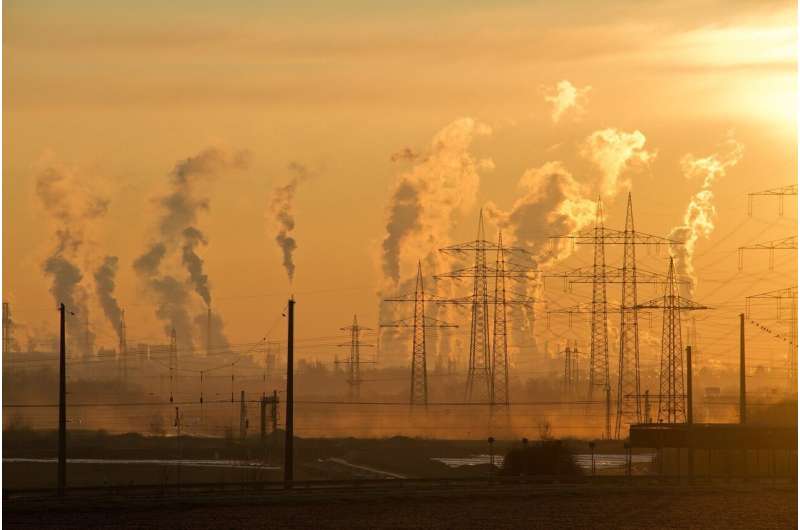

Governments, regulators and global financial institutions are overlooking major opportunities to unlock the estimated US$9.2 trillion worth of financing needed each year to fund the net zero transition, new research suggests.
To deliver the funding, a recent report from King’s College London argues for an urgent focus on three key areas of the financial system:
- Governments should engage with the new forms of partnerships between banks and other financial institutions that free up their lending capabilities;
- Multilateral development banks should make more use of their balance sheets to attract private sector funding through blended finance;
- Regulators should develop global carbon markets with a focus on integrating national emissions trading systems and enhancing trust in voluntary markets.
The report highlights that the multilateral development banks alone could more than double their stock of lending to release a further $1.2 trillion of net zero financing without harming their AAA ratings and estimates that governments could release £8.5 billion of new bank lending through every £1 billion they invest in loans to decarbonization projects.
The report and its recommendations were developed by Professor David Aikman, a former Technical Head of the Bank of England’s Financial Stability Division, and Professor Raúl C. Rosales, a member of the Management Committee of the Singapore Green Finance Centre.
“Mobilizing enough finance to achieve our net zero goals is a major challenge, but our research highlights the potential of three avenues that should become a focus for policymakers in the run up to COP29 and beyond,” says Professor David Aikman, Director of the Qatar Centre for Global Banking and Finance at King’s Business School.
The banks’ role in financing the transition to net zero
The report outlines how, ahead of the full implementation of the Basel III capital adequacy rules, banks are increasingly partnering with non-bank players in innovative ways that allow them to de-risk in line with existing regulatory and supervisory frameworks.
These include strategic partnerships and new investment fund platforms with private credit, as well as the increased use of so-called “synthetic risk transfers” that move credit risk to third parties such as investment funds, freeing up funds for further lending. EU banks alone issued €102 billion in synthetic risk transfer securitizations in 2023 and 11% of these were linked to sustainability lending.
The authors argue that governments and policymakers can support this transfer of risk between the banks and other parts of the financial sector;
- By fostering the globally harmonized regulation of de-risking mechanisms such significant risk transfers and synthetic securitizations
- As investors: The authors estimate that a £1 billion government investment in the junior tranche of a pool of loans for decarbonization projects would generate additional bank lending capacity of around £8.5 billion. In the UK, the new National Wealth Fund could play a role both as a guarantor and coordinator of private sector lending for net zero technologies and projects.
Blended finance
Blended finance uses catalytic capital from public or philanthropic sources to mobilize private sector investment in sustainable development projects, primarily in developing countries. Public investment is led through Multilateral Development Banks (MDBs) and Development Finance Institutions (DFIs). While climate finance accounted for over half of the value of blended finance deals in 2023, the report highlights that at $15 billion of new transactions, the overall sector remained relatively small, and sets out how it could be expanded.
The authors calculate that MDBs and DFIs draw on private sector investors for only 11% of their annual overall financing commitments. Their analysis of credit rating agency reports suggests that there is significant potential for MDBs to increase their leverage while still maintaining their AAA credit ratings. They estimate that collectively, the 13 MDBs focused on developing countries could increase the stock of development assets they finance by around $1.2 trillion, a 2.5-fold increase, without harming their current credit ratings.
Furthermore, if MDBs operated under an AA rating instead of AAA, their financing capacity would increase by a further $1–1.2 trillion, significantly boosting their development and financial impact.
Carbon markets
By putting a price on carbon, carbon markets create economic incentives for businesses and governments to invest in clean technologies and implement carbon pricing policies. They are also a source of revenue for government investments in net zero projects: in 2023, Emissions Trading Systems generated $74 billion in government revenues. Alongside the ETSs are voluntary carbon markets offering trading in ‘carbon credits’ issued by the developers of carbon removal and reduction schemes.
The authors argue that these markets can be made more attractive through:
- Linking the UK and EU ETSs as envisaged in the EU-UK Trade and Cooperation Agreement governing post-Brexit trade relations. This is also a necessary condition for exempting UK exports from the EU’s Carbon Border Adjustment Mechanism.
- Stronger regulatory oversight, with clear rules on carbon credit usage, and a global standard for the financial accounting of certified carbon offset credits.
- Further integration, for example integrating the voluntary carbon markets with the established emissions trading systems, which would provide a strong pricing signal.
“Partnerships between banks, investors, and regulators offer a critical opportunity to channel funds into low-carbon technologies by de-risking through regulated schemes. Multilateral development banks (MDBs) can amplify their impact by leveraging resources without straining government budgets, helping to establish sustainable infrastructure platforms in developing countries. Governments play a key role in integrating carbon markets through mechanisms like ETS and GGRs, enhancing transparency, and market efficiency, and sending a strong price signal for decarbonization,” says Professor Raúl C. Rosales, Professor of Practice in Net Zero Asset Management at King’s College London.
More information:
Policy paper: www.kcl.ac.uk/business/assets/ … act-policy-paper.pdf
Provided by
King’s College London
Citation:
Report sets out three overlooked opportunities to fund net zero transition (2024, September 24)
retrieved 24 September 2024
from https://phys.org/news/2024-09-overlooked-opportunities-fund-net-transition.html
This document is subject to copyright. Apart from any fair dealing for the purpose of private study or research, no
part may be reproduced without the written permission. The content is provided for information purposes only.

